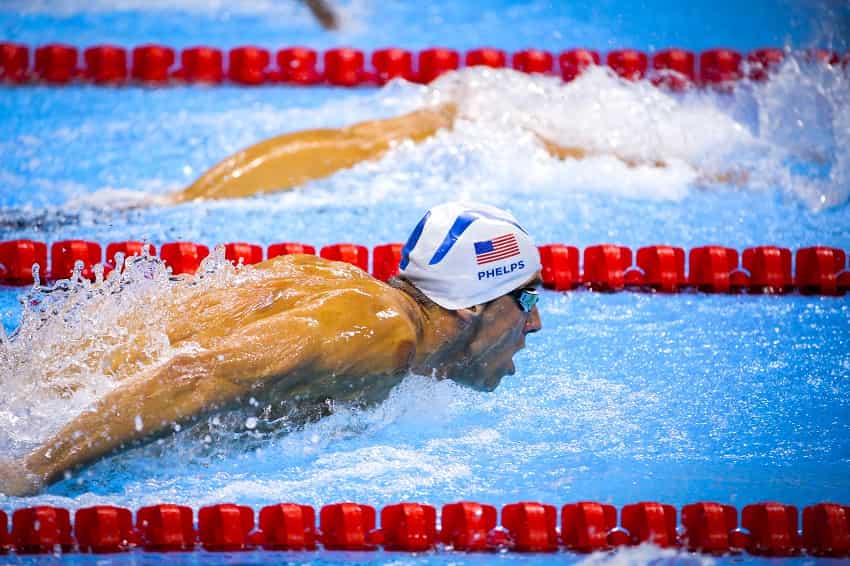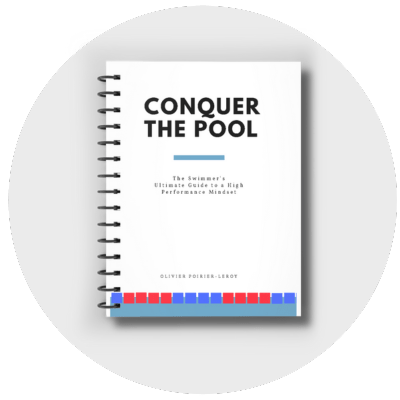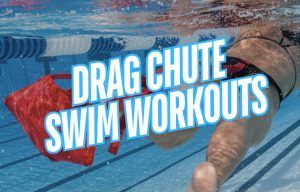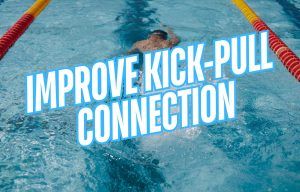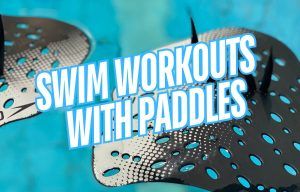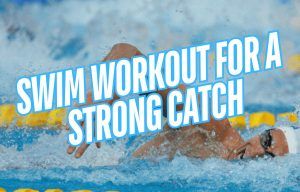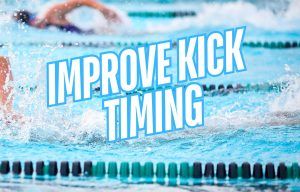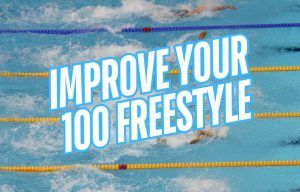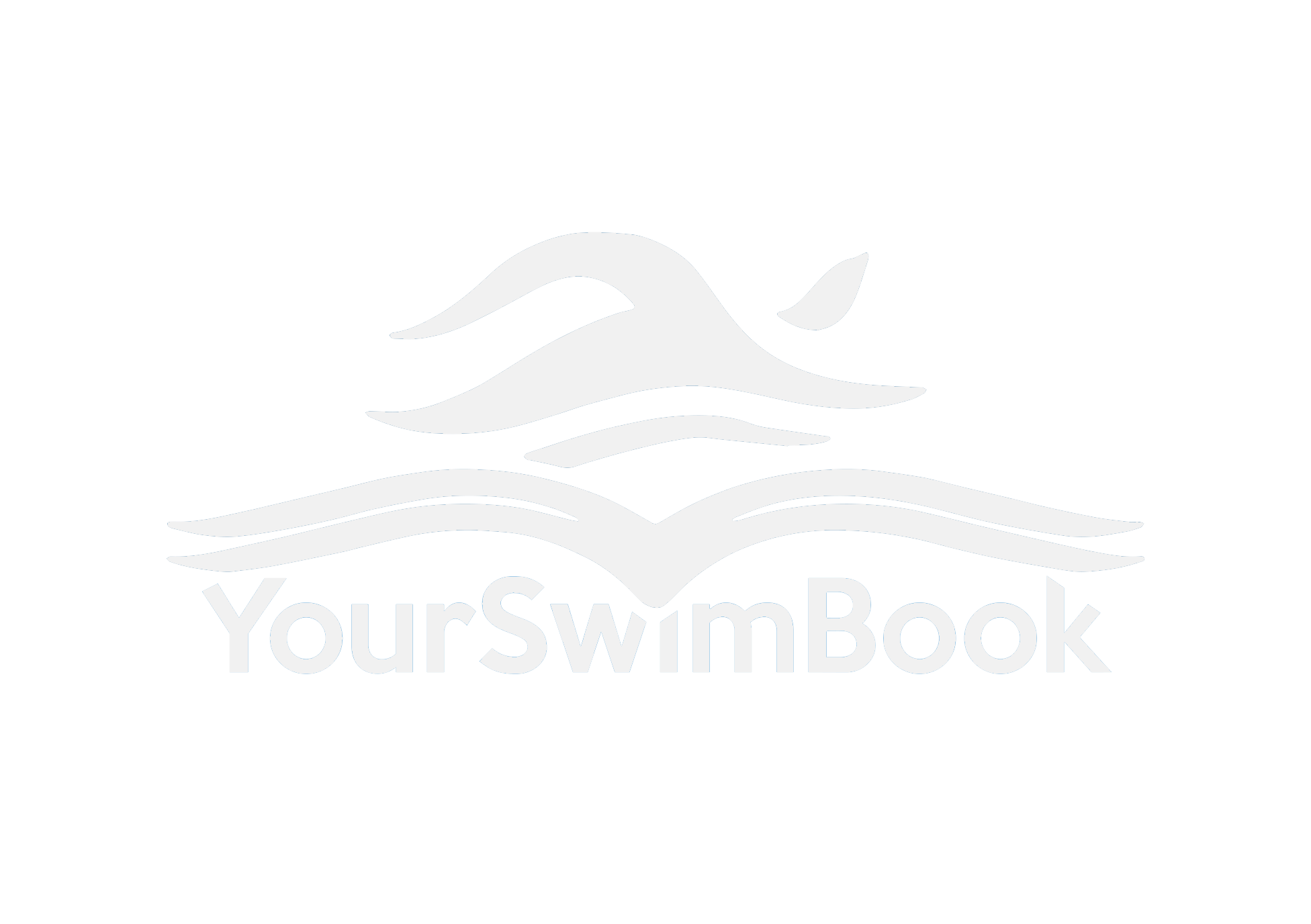Michael Phelps qualified for his first Olympics in the 200m butterfly as a 15-year old. He would complete his fifth Olympic Games winning his third gold medal in the event. Here are some of the sets the GOAT used to develop the endurance and speed to conquer one of the sport’s most difficult events.
You probably don’t need me to tell you about Michael Phelps.
(But I am going to tell you a little anyway!)
His versatility is one of the most impressive aspects of his career. But it was his butterfly that sent him hurtling onto the world scene.
As a 15-year old, Phelps qualified for the US Olympic Team that went to the 2000 Olympics in Sydney. He placed fifth in the 200m butterfly, putting the world on notice. A year later, he became the youngest male world record holder in history when he broke the 200m butterfly mark at Worlds.
Over the next 15 years, Phelps dominated the event internationally, going largely undefeated in the event (*London 2012; see #PhelpsFace) and breaking the world record a total of eight times.
Here’s some context of how badly he mauled the world record during his career: Until Phelps came along, no one had gone under 1:55. By the time he was done with the sport (for the second time), the mark stood at 1:51.51.
Okay, we are getting carried with stats and times and records.
You came here for some sets to improve your 200m butterfly.
So let’s get to the good stuff.
Here are a couple of the sets and swim practices that Michael Phelps and his long-time coach Bob Bowman used to help the Baltimore Bullet unleash rampant destruction on the 200m butterfly.
How to improve your 200m butterfly
Even though Bowman and Phelps had their eyes and goals set on the Olympic-length pool, short course yards training was always a key component of their preparation.
The shorter pool allowed for more yardage completed at race speed and premium technique. As Bowman says, “The majority of our endurance butterfly sets are done in a 25-yard pool.”
Here are some of the sets they would do:
Set 1 (SCY)
3x
- 10×50 @:45 – focus on stroke control
- 5×50 @:35 – as fast as possible
No rest between rounds. Phelps would hold :28s on the set of 10 reps, while holding :25s on the set of 5 reps.
Set 2 (SCY)
3x
- 4×100 butterfly @1:10 or 1:15 – target: hold under a minute per rep
- Extra minute rest
- 1×100 fly as fast as possible
- 300 drill and swim recovery between rounds
Set 3 (SCY)
20/30/40×25 fly best average @:20
Pretty simple. You get just enough rest on each wall to take a couple big breaths and keep your technique from disintegrating like a cheap kick-board. Bowman likes this set as it “is tremendous conditioning and mentally challenging.”
The quick bursts of rest allow for technical instruction and “helps the swimmer stay focused on technique under the physical stress of the interval.”
Long course sets for improving the 200m butterfly
Long course race pace training was typically done with longer rest.
Set 4 (LCM)
Broken 200s, done in the long course pool, were used to help simulate the feeling and speed of going goal pace and as a form of race rehearsal:
3-4 x
- 50 from a dive @1:30 – Target: opening 50 speed of your 200 goal time
- 100 from a push @2:30 – Target: middle 100 pace
- 50 from a dive @1:30 – Target: as fast as possible
- 400 recovery between rounds
- Each round was completed on approximately 10 minutes
Set 5 (LCM)
8-24×50 fly @1: 30
- ODDS: From a five
- EVENS: from a push
- Every rep is done as fast as possible. The goal is to replicate the anaerobic ouchies that you experience during the actual race.
The Next Step
Doing these sets, intervals and target times might seem otherworldly for just about every swimmer on the planet. (They are.)
Almost none of us will ever be able to do these sets the way Phelps did them.
But that’s not really the point, is it?
Instead, pay attention to how the sets were designed to prepare Phelps for the rigors of the event.
Draw inspiration and motivation from how the emphasis was always technique, race pace, and quality. Set by set, rep by rep, Phelps and Bowman were building a performance.
And even though you may not ever be able to swim at Phelpsonian speeds, or hold Phelpsonian intervals, you can always take this mindset and attention to detail to the pool, regardless if you are training for the Olympics, J.O.’s, or your first Masters meet after thirty years off.
Note: These sets were pulled from one of the best swim coaching books out there, the Swim Coaches Bible 2. I’ve included the book within my list of essential books for swim coaches. You can also pick up a copy for yourself here via Amazon (affiliate link).
See Also:
How to Dominate Your Next 100m Butterfly. Dominate the back-half of your 100m butterfly with these two sets used by the greatest butterflier of all time, Michael Phelps.
3 Butterfly Drills with Sarah Sjostrom. Take your butterfly to the next level with three butterfly drills from Olympic champion Sarah Sjostrom (with video demonstrations).

